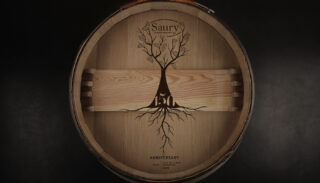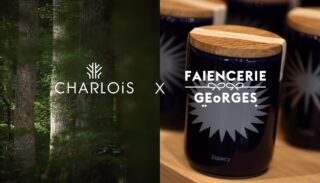History of “Maison Charlois” #4
9 November 2023Thanks to Jean-Louis Binder’s photographs, we can provide a visual record of Maison Charlois’ activities in the 1950s and 1960s.
At that time, the Charlois family already had in its DNA a desire to make the most of every raw material, shaping all parts of the oak tree, whatever their dimensions. The workshop produced both split timber (staves, laths) and sawn timber, mainly railroad sleepers.
A few verses written by Achille Millien at the turn of 20th century (“Printemps VIII – Fendeurs au travail“) regarding splitters’ activities illustrate the different types of split wood produced by splitters and their uses: “The wood under the coulter bursts / Here for our roofs is the lath, / For our vines the stiles / And the stavewood for the Tonne / Whose sweet wine, in autumn, / Restores verve to weary spirits.”
Split oak battens could be used as roof battens, or for lath and plaster partitions and ceilings. Roof battens support the roofing (tiles, slates, shingles, etc.) of a building and are laid on the rafters.
In one of Jean-Louis Binder’s photographs, Eugène Charlois is finishing a batten with a straight plane on an inclined trestle, also known as a gliding saddle, topped by a foot-operated wooden vice to hold the piece of wood to be shaped.
By contrast with the inclined trestle, the cooper’s bench (banc d’âne) was horizontal, to enable staves to be shaped in a seated position (cf. Plate from Diderot and d’Alembert’s Encyclopédie).
Photographs © Jean-Louis Binder :
- Eugène Charlois finishing a lath on an inclined trestle, 1964
- Eugène Charlois sorting laths. In the 3rd photograph, Denis Charlois can be seen in the background.
Detail of a plate from Diderot and d’Alembert’s Encyclopédie devoted to the cooper’s trade © D.R.








